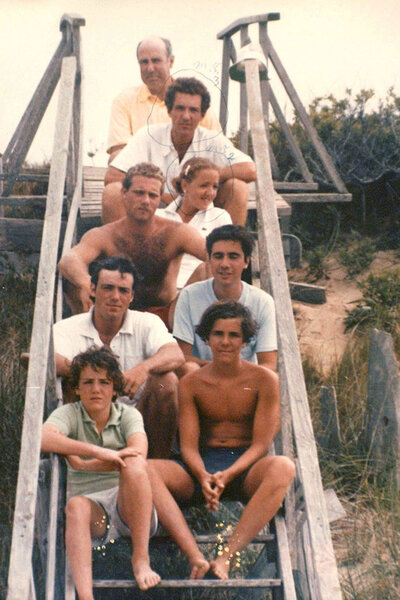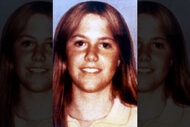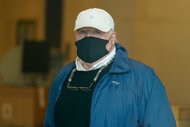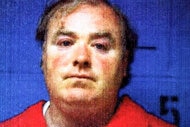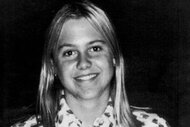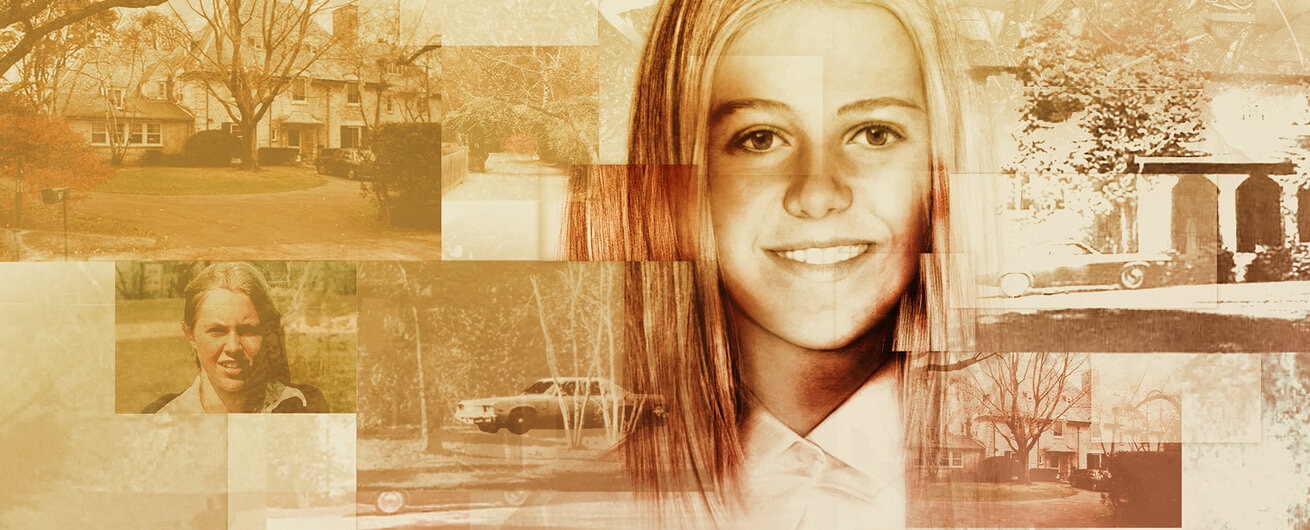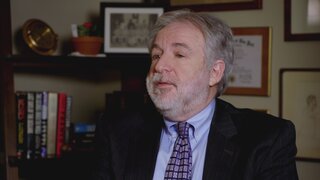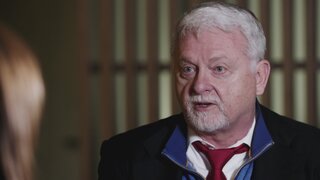Create a free profile to get unlimited access to exclusive videos, breaking news, sweepstakes, and more!
Who Is Michael Skakel, The Kennedy Cousin Accused Of Murdering Martha Moxley?
In 2002, the Kennedy cousin was found guilty of murdering his 15-year-old neighbor, but his conviction was later vacated.
It’s a murder case with confusing twists and turns, one seemingly closed before opening right back up again. But the 1975 murder of Martha Moxley didn’t just capture the nation’s attention because of its many contradictory developments: It also attracted attention because of who was eventually convicted (and then cleared) of the crime: a member of the Kennedy dynasty, Michael Skakel.
So who is Michael Skakel, one of the main players in this mysterious case?
Before Michael, the nephew of Robert F. Kennedy, was charged with the murder of Moxley, he offered a glimpse into his tumultuous childhood and battle with addiction through an unpublished memoir, “Dead Man Talking: A Kennedy Cousin Comes Clean.”
The memoir was shopped around to various publishers in 1998 as “the first account by an insider of the avarice, perversion, and gangsterism of ‘America’s Royal Family.’” Michael characterized his hometown of Belle Haven, an exclusive enclave in southern Greenwich, Connecticut, as a place with “corrupted values and toxic lessons,” reported CNN.
He was primarily raised by his father, Rushton Skakel, the brother of Ethel Kennedy, after the 1973 death of his mother, Anne Skakel. Out of his six siblings, it seemed Michael had the most difficulty dealing with his mother’s passing.
"[I]n the aftermath (of her death), an even more intense level of chaos came to rule our household. I became a full-blown daily-drinking alcoholic by the time I was thirteen,” said Michael in his unpublished biography.
This was an assertion shared by others: By neighbors and teachers, Michael was described as a violent boy who had trouble controlling his temper, while friends said the Skakel household was filled with alcohol, drugs and sibling rivalries. In his book “Murder in Greenwich: Who Killed Martha Moxley?,” author Mark Fuhrman contends Michael and his older brother Tommy Shakel fought often, and that their competition over the affection of their neighbor, 15-year-old Martha Moxley, was what resulted in her murder.
Martha went missing the night of October 30, 1975, after leaving the house of Michael, also 15 at the time, and Tommy, 17. The following day, Martha was found beaten and stabbed to death in her backyard. In his memoir proposal, Michael promised there would be a chapter on the slaying, and he did confess that on the night of her murder, he was sexually attracted to Martha: "I wanted to kiss her. I wanted her to be my girlfriend, but I was going slow, being careful.” He also admitted to being under the influence of alcohol and marijuana that night.
But Michael wasn’t charged with anything in the immediate aftermath of the murder; while he and his brother were interviewed by police, no one was arrested and the case lay dormant for decades.
Meanwhile, life reportedly became rougher for Michael. In 1978, Michael was charged with drunken driving, reported CNN. The Skakel family arranged to send Michael to the Elan School in Poland Spring, Maine, which treats children with substance abuse problems, to avoid prosecution. Michael described it as “concentration camp for kids” where “beatings, humiliation and degradation” were the curriculum. He was enrolled for two years, [AND?] classmate Gregory Coleman claims that Michael said in a group therapy session he killed Martha, according to The New York Times. (The institute’s owner, Joe Ricci, denied Michael ever made the confession.)
After leaving Elan, things started looking up: Michael attended several rehab centers and became sober in his mid-20s, reported CNN. He pursued various hobbies and careers, and in 1994, he worked as an aide to Senator Edward Kennedy’s re-election campaign. Michael eventually married golf pro Margot Sheridan, and the couple had one child.
In 1995, however, Michael was dragged back into the murder case when a report made by a private detective firm obtained by the Skakel family was leaked to the press. The report included an interview with Michael, who revealed he had lied to police in 1975 about his actions on the night of Martha’s murder. He admitted that after coming home from his cousin’s house, he had climbed a tree outside Martha’s window around midnight and masturbated in it.
To make matters worse for Michael, a major rift formed between him and his family in 1997 when Michael spoke with law enforcement regarding his cousin Michael Kennedy’s alleged affair with his teenage babysitter. Then, came the murder charges for Michael.
On January 19, 2000, Michael was indicted in Moxley’s murder.After Michael appeared in court to face the murder charge, he came face-to-face with Martha’s mother, Dorthy Moxley.
“I feel your pain,” he told her. “But you’ve got the wrong guy.”
At a pre-trial hearing on June 21, 2000, two of Michael’s former Elan School classmates, John D. Higgins and Gregory Coleman, testified. Higgins said Michael revealed to him that he had fragmented memories of the crime, and Coleman testified that Michael once told him, “I am going to get away with murder. I am a Kennedy.”
Boyhood friend Andy Pugh also testified the following day, saying Michael had disclosed to him that on the night of Martha’s murder, he had climbed a tree and masturbated in it. The tree that Michael described, however, was not outside Martha’s window: It was the tree right above where Martha’s body had been discovered, reported The New York Times.
Pugh testified that he believed Michael had committed the murder, recounting a phone call he had with Michael in 1991. According to Pugh, he confronted Michael about his suspicions, and Michael denied killing her but admitted he had masturbated in the tree the night she died.
Two years later, Michael was convicted of murdering Martha Moxley. According to The New York Times, though no physical evidence linked him to the crime, the jury was moved by Michael’s various “incriminating statements and erratic behavior” following Martha’s killing. In August 2002, Michael was sentenced to 20 years to life in prison. He gave a statement, speaking for the first time during his trial, where he proclaimed his innocence.
Shortly after he was indicted, Sheridan filed for a divorce, which was finalized in 2001.
Over the following 11 years, Michael’s attorneys filed several appeals, and in 2013, a new trial was ordered by a Connecticut Appellate judge on the grounds that his previous representation was “constitutionally deficient." According to the judge, Michael’s trial attorney, Mickey Sherman, neglected to produce a likely alternative suspect. Sherman also failed to secure additional testimony to backup Michael’s alibi, that he was at his cousin’s house at the time of the murder.
Michael was released on $1.2 million bail. In 2016, Michael’s murder conviction was reinstated by the Connecticut Supreme Court, but in a 4 to 3 ruling two years later, it reversed its decision and vacated Michael’s conviction. In the intervening years, the court’s composition changed — one justice resigned and his replacement became part of the 2018 majority, according to the Hartford Currant.
As of today, the State has not announced if it will move forward with a retrial.
To learn more about the infamous Greenwich slaying, watch “Murder and Justice: The Case of Martha Moxley,” a three-part event series airing Saturdays at 7/6c on Oxygen.




